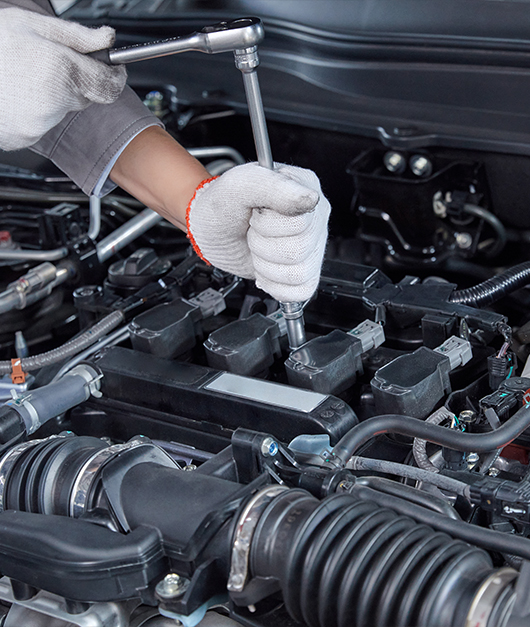
120PCS SOCKET SET (1/4"&1/2"&3/8")
Specification
|
MEAS |
G.W./N.W. |
Q’TY |
|
48.5x32.5x37.5CM |
18.9/18.4KGS |
2SETS |
Precision Manufacturing: Using high-quality materials and undergoing precision machining, our sleeve heads have excellent durability and corrosion resistance, ensuring long-term reliability.
Packaging & Delivery
Send Us a Message

120PCS SOCKET SET (1/4"&1/2"&3/8")
The Solution For All Industries And Factories
Fuxin hardware tools is a set of industrial enterprise product design, development, production and sales. Advanced design concept, advanced production technology and testing equipment and scientific management, Continuously develop high quality and high standards of quality products.
As China 120PCS SOCKET SET (1/4"&1/2"&3/8") suppliers and wholesale 120PCS SOCKET SET (1/4"&1/2"&3/8") factory, our company produces 1/4, 3/8, and 1/2 series of sleeves, quick wrenches, tool sets and other products. Products are mainly exported to Europe, America, the Middle East, Southeast Asia, and other advanced countries and the domestic market. Companies adhere to the quality of survival, service for the idea, Dedication to providing our customers with quality products and service attitude.
Look at the new and old customers who come to guide and negotiate! We will be higher, more refined, more sophisticated products to return many new and old customers.
Professional
Available for OEM and ODM, design based on our professional engineer team and mould factory.
Quality & Cost
We have our own machining workshop. So we can directly provide high-quality products.
Certificate Of Honor
News
-
32-piece 1/2" auto repair socket tool kit: portable and efficient, helping emergency repairs
The 2-piece 1/2" auto repair socket tool kit adopts precision forging technology as a whole. The 32 components cover common automobile bolt sizes and specifications, fully meeting the needs of various...
READ MORE -
1/4"DR deep socket wrench tool set, convenient storage, more durable
This deep socket wrench tool adopts a compact design. The compact design makes this deep socket wrench easier to store and manage. In many toolboxes or workbench spaces, compact tools can effectively ...
READ MORE -
Essential for all-around repairs: 12-piece quick ratchet handle socket set (1/2 inch), compatible with a variety of bolt shapes and deep operations
These 10 sockets cover a range of sizes from 8mm to 24mm, which can meet most common repair needs. Common bolts and nuts usually have standard sizes, so the sockets can easily adapt to most standard n...
READ MORE
Industry Knowledge Expansion
How sockets and wrenches are connected
The way sockets and wrenches are connected mainly depends on the type and design of the wrench. Here are a few common ways to connect:
1. Direct insertion: Some wrenches are designed with a built-in socket interface that can be directly inserted into the socket without additional accessories.
2. Adapter: If the wrench does not have a built-in socket interface, an adapter can be used to connect the socket to the wrench. Adapters usually come in multiple sizes to accommodate sockets of different sizes.
3. Quick release system: Some advanced tool sets come with a quick release system that allows users to quickly change sockets without using other tools. This system usually includes an interface with a spring clip that can easily lock or release the socket.
4. Ratchet system: Ratchet wrenches are usually used with sockets. The ratchet mechanism can quickly rotate the socket to improve work efficiency.
5. Extension rod: When you need to reach hard-to-reach areas, you can use an extension rod to connect the socket and wrench to increase leverage.
Cost-effectiveness of investing in a high-quality tool set
Investing in a high-quality tool set is often cost-effective in the long run for the following reasons:
Durability: High-quality tools are often made of better materials and manufacturing processes, so they are more durable and can withstand more frequent and intensive use.
Maintenance costs: High-quality tools require less maintenance, reducing long-term maintenance costs.
Efficiency: High-quality tools are often more reasonably designed and more comfortable to use, which can increase work efficiency.
Retention of value: High-quality tools depreciate more slowly, and they usually retain their value higher if they need to be sold or replaced.
The effects of long-term tool use on health
The following effects may occur in the long-term use of tools:
1. Musculoskeletal problems: Long-term use of tools may cause muscle fatigue, joint pain, and repetitive strain injuries, such as carpal tunnel syndrome.
2. Vibration injuries: When using power tools, vibrations may cause damage to nerves and blood vessels in the hands and arms.
3. Hearing damage: Working in a high-noise environment for a long time may cause hearing loss or tinnitus.
4. Respiratory problems: Some tools may produce harmful dust or gases during use, and long-term exposure may cause damage to the respiratory system.
5. Skin problems: Contact with certain tool materials or cleaning agents may cause skin allergies or irritation.
To reduce these health risks, appropriate precautions are recommended, such as using ergonomic tools, wearing protective gear, taking regular breaks and proper workplace ventilation.

 Search
Search







